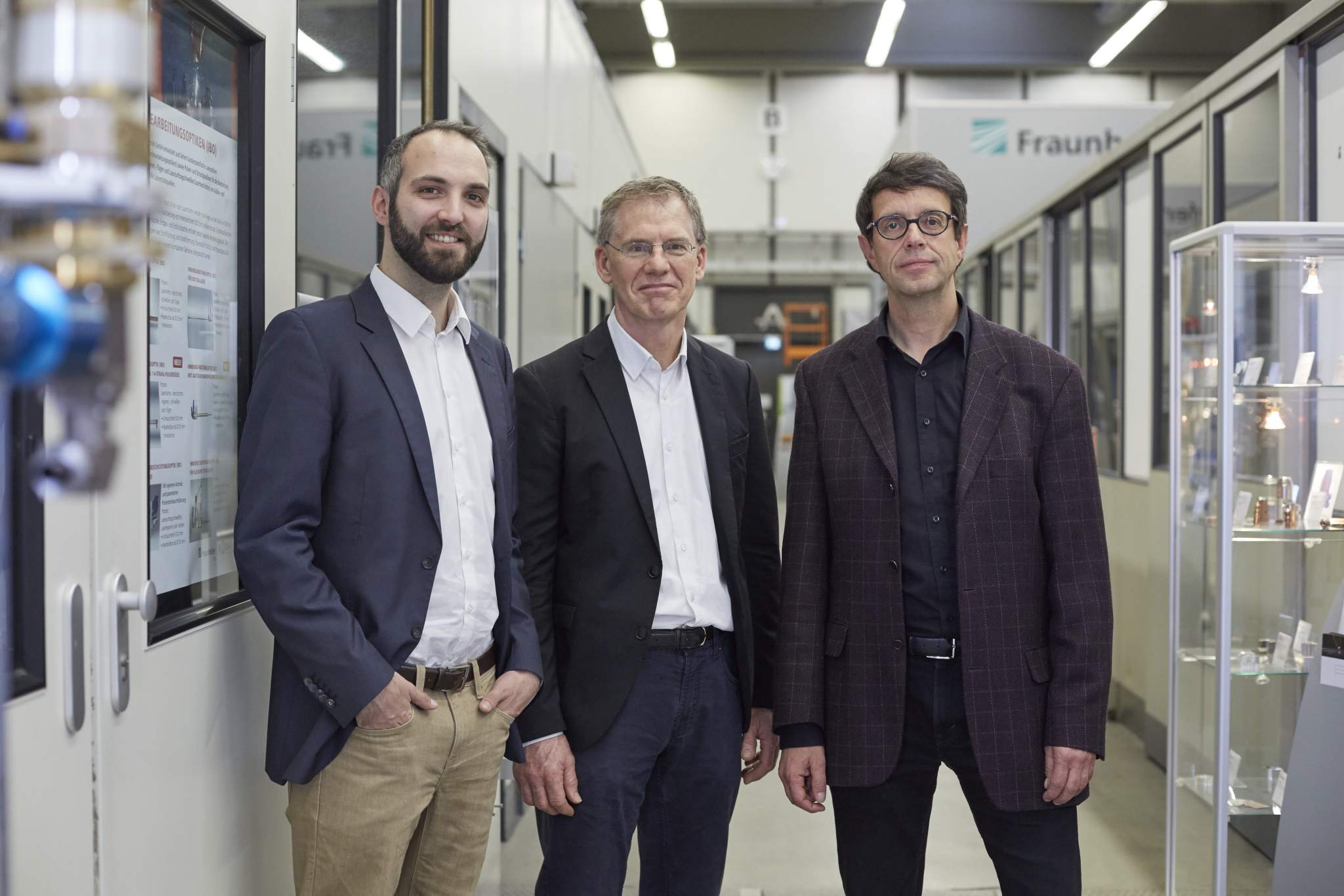Researchers at the Fraunhofer Institute for Laser Technology (ILT) have developed a new additive manufacturing method for coating, and repairing, metal parts.
Fraunhofer believes the technique, known as ultra-high-speed laser material deposition (EHLA), has potential to replace current corrosion and wear protection methods such as hard chrome plating and thermal spraying.
The development, which included researchers from both Fraunhofer and RWTH Aachen University, was recently awarded the Joseph von Fraunhofer Prize. For this accomplishment, EHLA researchers – Dr. Andres Gasser, Thomas Schopphoven and Gerhard Maria Backes – were awarded €50,000.

Ultra-high-speed laser material deposition
Fraunhofer explain that the EHLA process improves over the existing corrosion and wear protection methods with both efficiency and speed. Dr. Andres Gasser, group manager at Fraunhofer ILT, writes
We can now use EHLA to apply thin layers in the range of a tenth of a millimeter over large surfaces within a short time, while being resource-efficient and economical,
EHLA uses a laser to melt metal powders while they are above the melt pool. This means liquid metal drops into the weld pool rather than sintered particles. This is beneficial as it means the layers are more homogeneous and less material is required to be melted. In addition, Fraunhofer states “the component can be coated 100 to 250 times faster than with conventional laser material deposition” and without heating the substrate.
The Fraunhofer Institute for Laser Technology is certainly familiar with the use of lasers in additive manufacturing, as 3D Printing Industry learned earlier this year at conference discussing the use of lasers for series production.

With the EHLA process Fraunhofer says it has provided an improvement on the alternatives to combat corrosion and wear protection. Since hard chrome plating consumes significant energy and has drawbacks in bonding and porosity, while thermal spraying can be quite wasteful in terms of material used. In contrast, the EHLA process is non-porous which thereby improves bonding and reduces the possibility of cracks and pores developing. The EHLA technique also uses 90% of the material which is more frugal method than thermal spraying.
Repairing metal
Interestingly, Fraunhofer suggests the new EHLA coating method can be used to repair existing metal parts. Using additive manufacturing to repair metal components has been explored by the University of Akron. Following a collaboration with an aircraft maintenance and repair company, the university’s NCERCAMP developed a method of supersonic particle deposition which could have application in repairing metal aircraft components – if it receives FAA certification. Fraunhofer’s EHLA could similarly have such application for the ability to build up layers of metal on a part.
The immediate use of EHLA will attempt to address the cost of material corrosion which the University of Akron’s NCERCAMP estimates at $400 billion annually.
To receive the latest metal 3D printing news, subscribe to our newsletter and follow us on twitter and Facebook.
Featured image shows the EHLA process applying protective layers to a metal part. Photo by Volker Lannert for Fraunhofer ILT.



